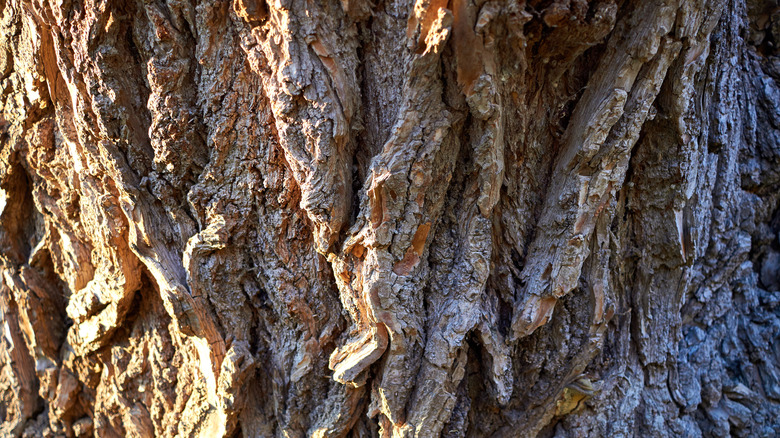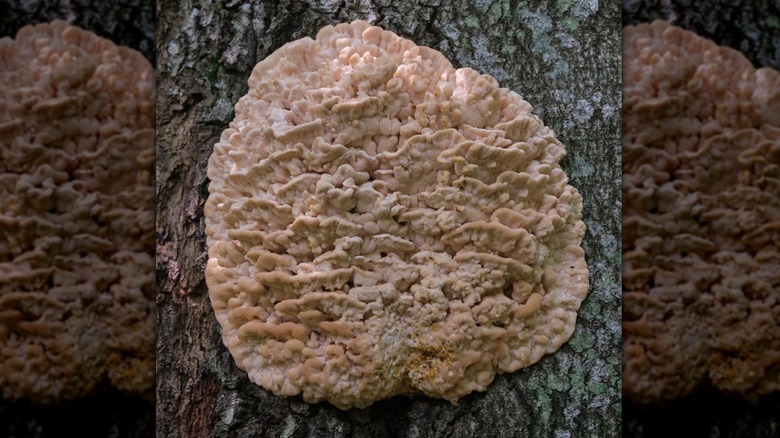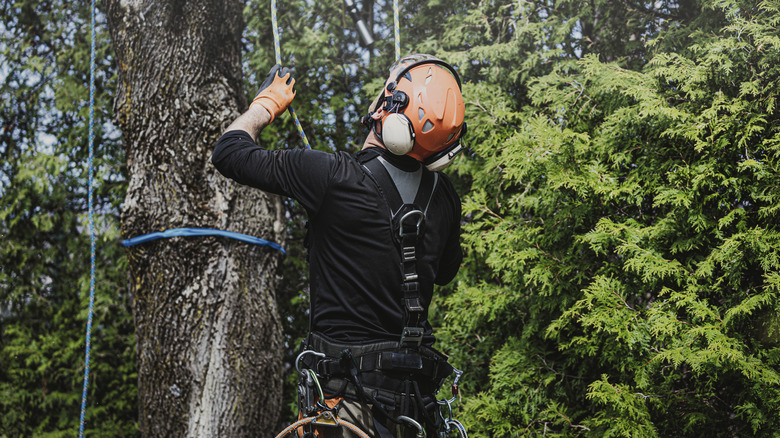What It Means If The Bark On Your Tree Starts Turning White
Healthy tree bark grows in different colors and is often a nice rich brown, but can also be gray or white. Natural tree colors vary but when your normally dark-colored bark starts to turn white, it can indicate a problem. One of the most serious causes of white tree bark is white rot fungus. If your tree normally has white bark, you will need to look closer for signs of fungal growth on the tree.
Be aware that there are other reasons for white discoloration on your tree bark besides white rot fungus. Lichens are a combination of algae and fungus that often appear as white or gray blotches on the bark. They make their own food using the sun's rays so they don't feed on the tree and don't harm it. Likewise, the fungal disease powdery mildew found on trees is also harmless. Sometimes the lighter color could just be the underside of the bark showing. This is often the case in accidents from lawnmowers, or some trees naturally shed their bark to reveal a lighter inner color. However, if you suspect white rot fungus, you will need to take steps to address it.
How white fungus affects a tree
One of the most notable signs of white fungus is that the affected wood may feel soft, spongy, or stringy, and can eventually turn white or yellow. You'll see clumps of fungus, often referred to as fruiting bodies, that resemble mushrooms or conks at the base or in other crevices of the tree. Wood is made of three main components: cellulose, hemicelluloses, and lignin. Two out of these three materials are affected by other types of rot like brown rot and soft rot. However, with white fungus rot all three parts of the tree's wood are obliterated. It's the only type of fungus to do this and can devastate the tree. This fungus invades trees that are stressed due to weather, drought, wounds, nutrient deficiencies, or decay.
The tree's instability and weakness can also affect its ability to transport water and nutrients throughout its system, which can lead to further decline. On top of that, an ill tree is more susceptible to insect infestations and other diseases. The biggest hazard of white rot infection is that it weakens the tree. This causes branches to be more liable to break from wind, snow, or other bad weather. When it's severe, the branches can crack and fall off at any time. It can be a serious danger to people and pets and may destroy property.
What to do if your tree has white rot fungus
While any tree can be susceptible to white rot infection, it is more likely to affect trees that are already stressed. Older trees are also at risk. The best way to guard against white rot fungus is to keep your trees in good health. This means having a professional regularly prune the branches and treat the soil to be sure it is nutrient-rich and properly hydrated. Early identification of diseased trees in your yard is crucial so be sure to regularly inspect trees for signs of infection, such as changes in the bark and branches or the presence of fruiting bodies.
Once white rot fungus has been detected, you must immediately take steps to manage the problem. If detected in its early stages, removing the infected wood through pruning can sometimes help. Fungicides may be used to slow the spread of the fungus. For severely infected trees, removal may be the only safe option. Though it never feels good to take a tree down, it may be necessary to protect people and property. If you're unsure if your tree has white rot fungus, call a tree service or professional arborist for a consultation. They can definitively diagnose the cause of the white bark and recommend the best course of action. In the end, it's best not to delay if you find any problem areas because early detection can save your tree.


